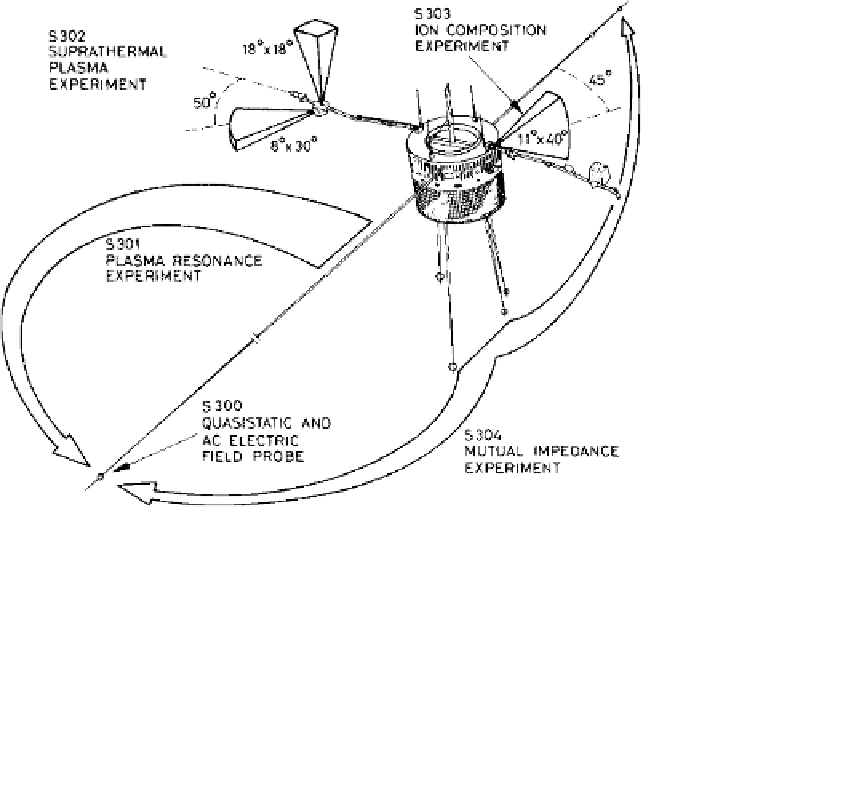Geoscience Reference
In-Depth Information
compared with the sphere size, 3 cm in diameter, and the sensor size, a
square of 17 cm. The antenna length was therefore much larger than the
Debye length, which guarantees reliable measurements. The sphere size is
larger that the Debye length, i.e., measurements cannot be considered as
point measurements, it has no severe consequence provided the sphere size
is much smaller than the antenna size.
The GEOS-1 spacecraft carried the mutual impedance instrument S304
to determine characteristics of the cold plasma component in the Earth's
magnetosphere. The two receiving spheres were separated by a distance of
42 m (Fig. 4). The two transmitting spheres were along a line parallel to the
receiving antenna, 3.3 m away from the spacecraft, and they made a 1.4 m
long dipole.
7
Most of the GEOS-1 data were recorded in a quasi-equatorial
plane from 4 to 7 R
E
. It allowed the Earth's magnetosphere to be exten-
sively studied, and in particular the plasmasphere. Due to the size of the
Fig. 4. Schematic view of the GEOS-1 satellite showing the locations of some of the
onboard plasma and wave instruments. The S304 mutual impedance is composed of two
transmitting 10 cm diameter wire mesh spheres, located at the tips of 3.3 m long axial
booms and separated by a distance of 1.4 m, and two receiving 8 cm diameter spherical
spheres, mounted on radial booms of length 42 m tip to tip.
7









